The following is a list of different pavement preservation methods in use within the City of Worcester.
Permanent Patch
A pavement maintenance technique that aims to address pavement damage, such as potholes, cracks, or utility cuts, with a repair that is designed to withstand heavy use and weather conditions, unlike temporary patches that are meant for short-term fixes.
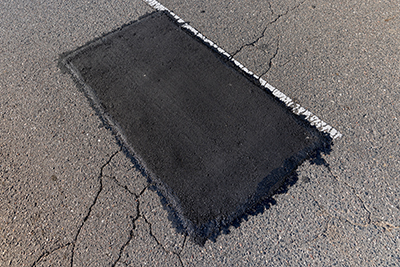
Process:
- Removal of the temporary patch and sawcut a minimum of 12 inches from the trench to make a neat, clean, and square joint
- Excavate a minimum depth of 4 inches, remove any large stone, and thoroughly compact the area
- Add emulsion and bituminous concrete in several courses to bring the patch to the roadway level
- Seal all joints
Benefits:
- Improves safety and drivability of roadway surface for all users
- Helps to prevent further deterioration of the roadway surface and infrastructure
- Extends the lifetime of the roadway surface
Crack Seal
A pavement maintenance technique that involves filling cracks with a flexible sealant to prevent water and other materials from penetrating the pavement and causing further damage.
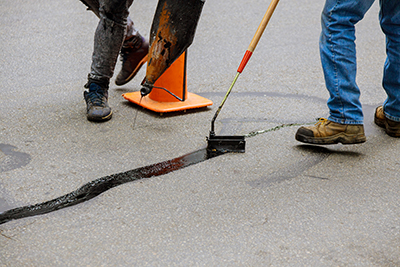
Process:
- Routing or sawing, cleaning, and drying existing cracks (as needed)
- Application of highly flexible polymer modified asphalt into/over cracks
- Application of blotting sand (optional)
Benefits:
- Seals moisture out of existing pavement and base materials
- Helps to prevent additional cracking and pavement distress caused by moisture damage
- 1 - 3 year life extension on good candidates; significant improvements when combined with other treatments
Fog Seal
A pavement preservation technique involving a light application of a diluted asphalt emulsion to an existing asphalt surface, primarily to seal minor cracks and prevent moisture intrusion, thereby extending the pavement's lifespan.
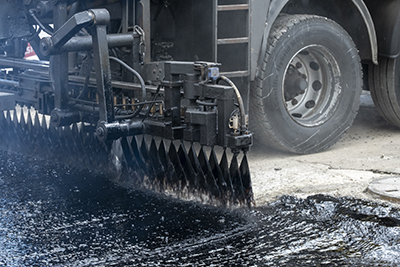
Process:
- Sweeping of road immediately before application
- Light spray application of diluted asphalt emulsion
- Lightly covered with fine aggregate to aid skid resistance
Benefits:
- Seals existing surface from moisture, raveling, and oxidation to extend useful life
- Rejuvenators help to restore aged asphalt in the pavement
- 2 - 5 year life extension on good candidates
Asphalt-Rubber Chip Seal
A pavement preservation technique that involves applying a hot, rubberized asphalt binder to a road surface, followed by a layer of aggregate chips, which are then compacted and excess chips are swept away.
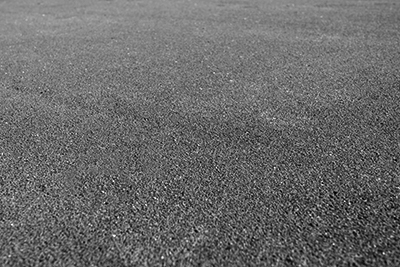
Process:
- Leveling course and crack sealing as needed
- Sweeping of surface immediately before application
- Spray application of asphalt rubber followed by a layer of heated and treated cover aggregate
- Immediately rolled and excess loose aggregate swept away
Benefits:
- Waterproofs and seals pavement, including small cracks and imperfections
- Highly resistant to reflective cracking
- Protects existing surface from traffic wear and improves skid resistance
- 8 - 12 year life extension on good candidates
Microsurface
A pavement preservation treatment that involves applying a mixture of asphalt emulsion, aggregates, mineral filler, water, and additives to an existing asphalt pavement surface to improve its condition and extend its lifespan.
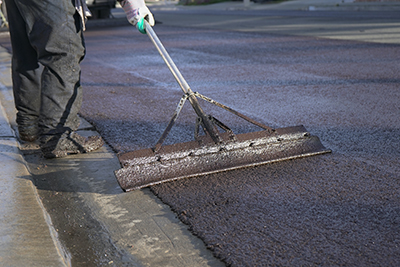
Process:
- Crack sealing and filling as needed
- Sweeping of surface immediately before application
- Mixture of asphalt emulsion, fine aggregate, mineral filler, water, and additives applied through a box spreader
- Utilizes a polymer modified emulsion that is applied between 3/8 to 1.5 inches thick
Benefits:
- Waterproofs and seals pavement, including small cracks, minor rutting, and surface imperfections
- Provides new wearing surface with improved skid resistance
- Minimal changes to roadway profile and maintains existing curb reveal
- 6 - 10 year life extension on good candidates
Bonded Wearing Course
A pavement treatment that involves applying a thin, ultra-thin hot-mix asphalt (HMA) layer over a polymer-modified asphalt emulsion membrane to create a durable, water-resistant surface, often used to extend the life of existing pavements.
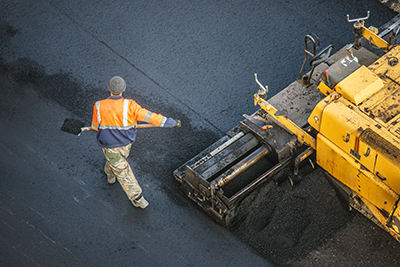
Process:
- Leveling course and crack sealing as needed
- Sweeping of surface immediately before application
- Spray paver application of polymer modified emulsion and ultrathin (3/4 inch) gap graded hot-mix asphalt (HMA)
- Immediately rolled and open to traffic
Benefits:
- Waterproofs and seals pavement, including small cracks, minor rutting, and surface imperfections
- Superior bonding allows for thin application that preserves curb reveals
- High skid resistant wearing surface that will not de-laminate
- Quick construction and curing process allows for minimal traffic impact
- 8 - 14 year life extension on good candidates
Hot In-Place Recycling
A pavement rehabilitation technique that is an on-site, in-place method that rehabilitates deteriorated asphalt pavements and thereby minimizes the use of new materials to correct surface distresses not caused by structural inadequacy, such as raveling, cracks, ruts and holes, and shoves and bumps.
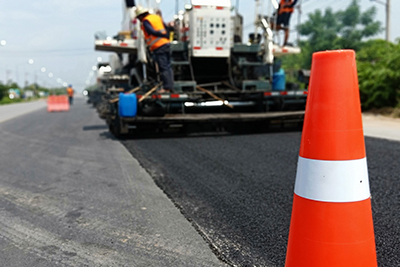
Process:
- Continuous equipment train heats existing pavement to 250 - 300 degrees Fahrenheit before scarifying and millings to ¾ to 2 inches
- Material is mixed with rejuvenating asphalt binder and repaved to roadway
- Immediately compacted and open to traffic
- Finished with surface treatment of hot-mix asphalt (HMA)
Benefits:
- Restores profile of roadway
- Provides improved base course utilizing existing materials
- 6 - 10 year life extension on good candidates
Cold In-Place Recycling
A pavement rehabilitation technique that reuses existing asphalt pavement materials in place, without heating, by milling, crushing, and mixing them with additives, then re-laying the recycled material to correct surface distresses not caused by structural inadequacy, such as raveling, cracks, ruts and holes, and shoves and bumps.
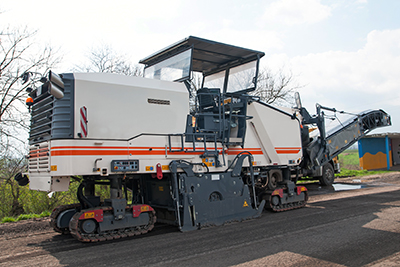
Process:
- Continuous equipment train that mills, grinds, and resizes 3 to 5 inches of pavement (RAP)
- Emulsion mixed with RAP onboard and placed back on the roadway
- Immediately compacted and open to traffic
- Option Fog Seal can be placed to seal the surface until topping
- Finished with hot-mix asphalt (HMA) overlay or other surface treatment
Benefits:
- Restores profile of roadway
- Recycles existing materials in place and eliminates rutting, cracking, and patch issues in pavement layer
- 6 - 12 year life extension on good candidates
Structural Hot-Mix Asphalt (HMA) Overlay
A pavement rehabilitation technique where a new layer of HMA is placed over an existing pavement to increase its structural capacity and extend its lifespan, typically used when the existing pavement has minor to modest damage to improve the pavement structural capacity.
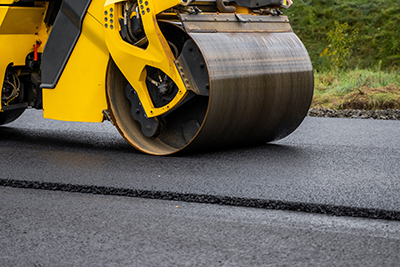
Process:
- Milling and/or crack sealing and filling as needed
- Hot-mix asphalt (HMA) paving
- Immediate compaction and open to traffic
Benefits:
- Waterproofs and seals pavement, including small cracks, minor rutting, and surface imperfections
- Provides new wearing surface with improved rideability
- 4 - 12 year life extension on good candidates
Roadway Reconstruction Methods
The following is a list of different reconstruction methods for roadways within the City of Worcester.
Mill & Overlay
A roadway reconstruction technique where the top layer of asphalt is milled (ground down), the surface is cleaned, and then a new layer of asphalt is placed on top, effectively resurfacing the road. This work includes reconstruction of abutting sidewalks and pedestrian curb ramps.
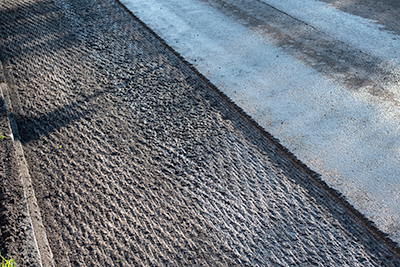
Process:
- Grinding and removing the top layer of deteriorated asphalt
- Swept and cleaned to remove any loose debris and dust
- Filled as needed and application of a tack coat (a thin layer of asphalt emulsion) to the milled surface to help the new asphalt layer bond to the existing pavement
- Hot-mix asphalt (HMA) is placed on top of the prepared surface, typically 1.5 to 2 inches thick, and compacted to create a smooth, even surface
Benefits:
- Extends the life of the existing asphalt pavement when the underlying pavement is still structurally sound
- Addresses minor surface irregularities and improves the rideability
Full-Depth Reclamation
A roadway reconstruction technique that recycles existing pavement as the base for the new roadway-wearing surface. This work includes reconstruction of abutting sidewalks and pedestrian curb ramps.
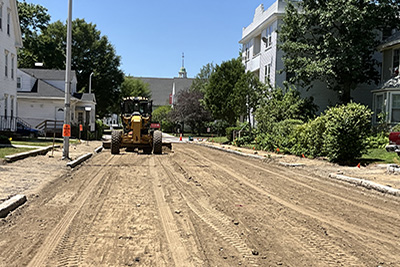
Process:
- Existing pavement and a portion of the underlying materials (base, subbase, and/or subgrade) to the desired depth
- The pulverized material is stabilized with additives to improve the strength and durability of the reclaimed pavement
- The pulverized material is then mixed and shaped using a reclaimer and trimmed to final grade
- A fog seal is applied to protect the finished reclaimed layer and seal out moisture (optional)
- Hot-mix asphalt (HMA) is placed on top of the prepared surface and compacted to create a smooth, even surface
Benefits:
- Minimizes waste by reusing existing materials and reduces the need for hauling materials in and out of the site
- Creates a stronger, more durable base that can withstand heavier traffic loads and reduces the risk of future pavement failures
Contact Information
Address
Transportation and Mobility
76 East Worcester Street
Worcester, MA 01604
Contact
Phone: 508-929-1300 ext. 49500
Fax: 508-453-2888
Email Us
Hours
Monday - Friday
8:30 a.m. - 5 p.m.

